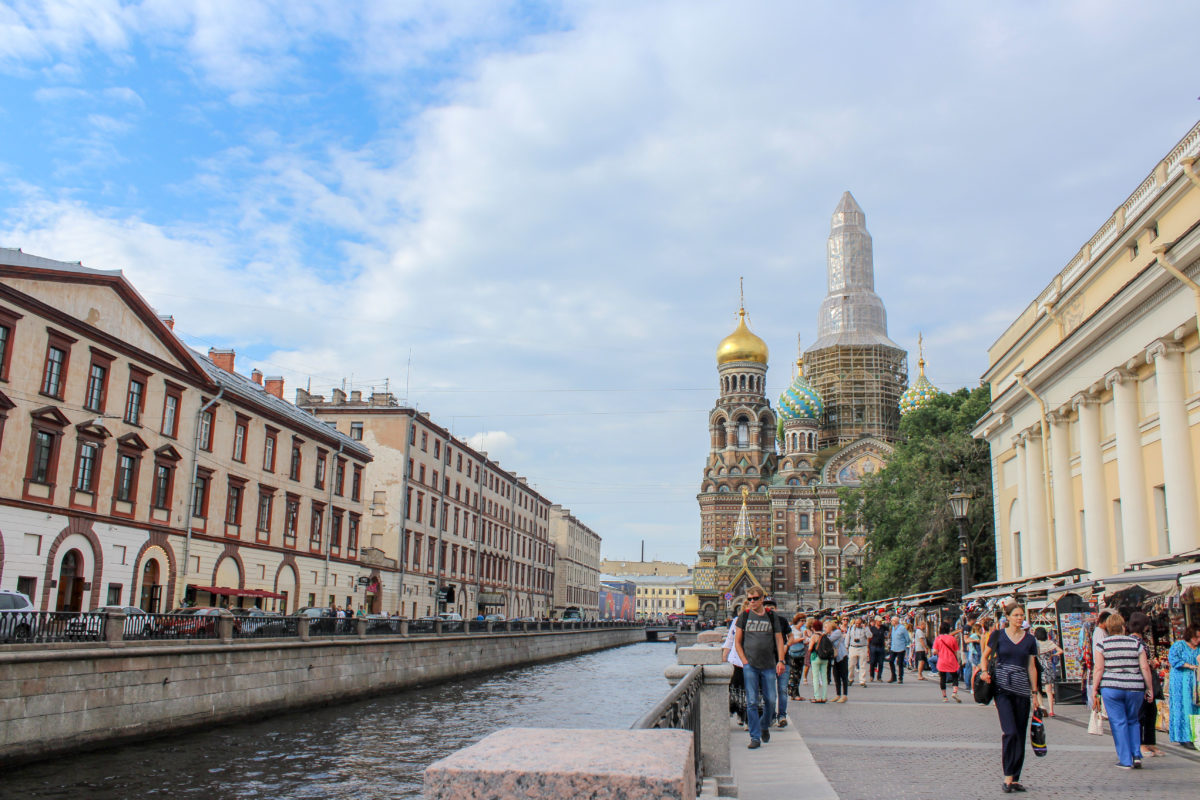
You may have gathered by now that I recently made the pilgrimage to Russia. After a decade of studying Russian literature and history, I hopped on a plane to experience the place firsthand. The two week trek started in Saint Petersburg and ended in Moscow. As you can imagine, I have a lot of feelings, so bear with me while I write about the experience over time.
What You Need to Know Historically
Saint Petersburg was build by Peter the Great to emulate the Western cities he’d admired in his travels. Every detail was planned out which gives the city a very cohesive feel. The buildings are almost all neoclassical, many painted in bright colors typical of major Russian cities, blue, green, yellow, pink. There are no skyscrapers in the city even to this day. Large boulevards wind around canals much like Amsterdam, where Peter found his inspiration.
The up side of this is that Saint Petersburg is a beautiful city which still retains the feel it had when Peter first built it due to legislated preservation. The down side is that tens of thousands of serfs were killed during the brutal building of the city. When people say Saint Petersburg was built on the backs of the serfs, it’s not a euphemism, their bones are in the city’s foundation. What can I say? That’s imperial Russia for you. Beautiful, but cruel.
Peter moved the capital from Moscow to Saint Petersburg and so the most lush and well known of the imperial palaces are here. He also wanted it to be the center of culture and intellectualism in Russia and so most of the big art museums and centers still live here. From what I can gather it’s now the more hipster of the two cities.
Fun fact: during the Soviet era St. Petersburg was renamed both Leningrad and Petrograd. Many people think Leningrad was Moscow but in fact they both refer to St. Pete’s. First it was changed to Petrograd to get away from the German sounding “burg” because, well you know, World War I. Then it was changed to Leningrad because viva communism.
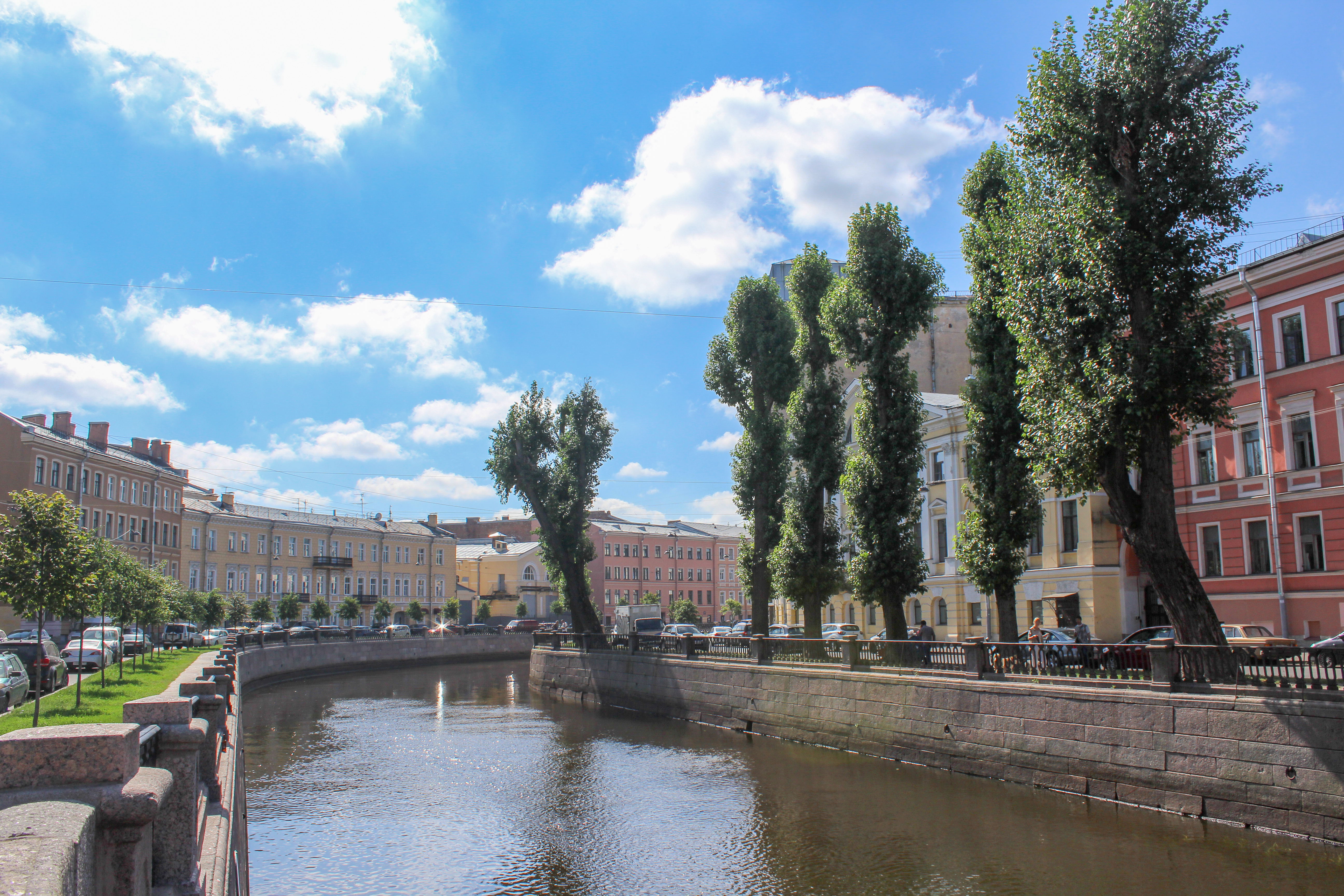 What You Need to Know Now
What You Need to Know Now
Not a lot of people speak English here, but some do. I found that everyone was very friendly and eager to help, even if they couldn’t communicate. I suggest targeting teens if you need directions, they’re much more likely to know some English than older people.
The currency is the rouble and the exchange rate is quite favorable for the dollar right now. I used my card almost everywhere but it’s good to have some cash for tip and outdoor markets. Tipping etiquette is 10-15%, sometimes tip is included, sometimes not so always ask or check.
Especially when English isn’t widely spoken it’s helpful to have access to cellular data for Google Maps. I used Verizon’s TravelPass which is when you pay $10 a day to retain all your regular data, talk, and text. If you choose to use a SIM card just know that you need separate SIM cards for St. Petersburg and Moscow. One SIM card doesn’t serve all of Russia.
You need a visa to enter the country and it will take AT LEAST 4 weeks to process. It’s imperative that you do this in advance. I went through the ILS Russian Visa Center and they were very helpful and communicative.
What to Do
Like I mentioned, Saint Petersburg is museum CENTRAL. Regardless of whether you like art you should take a trip to the Hermitage which is in the Winter Palace downtown. There’s an extensive European art collection put together mostly by Catherine the Great who basically stole a bunch of people’s art collections out from under them. She’s my hero. You can also tour the rooms with a guide to learn about palace life which is crazy interesting. I also recommend you check out The Russian Museum, where, surprise, the Russian art is.
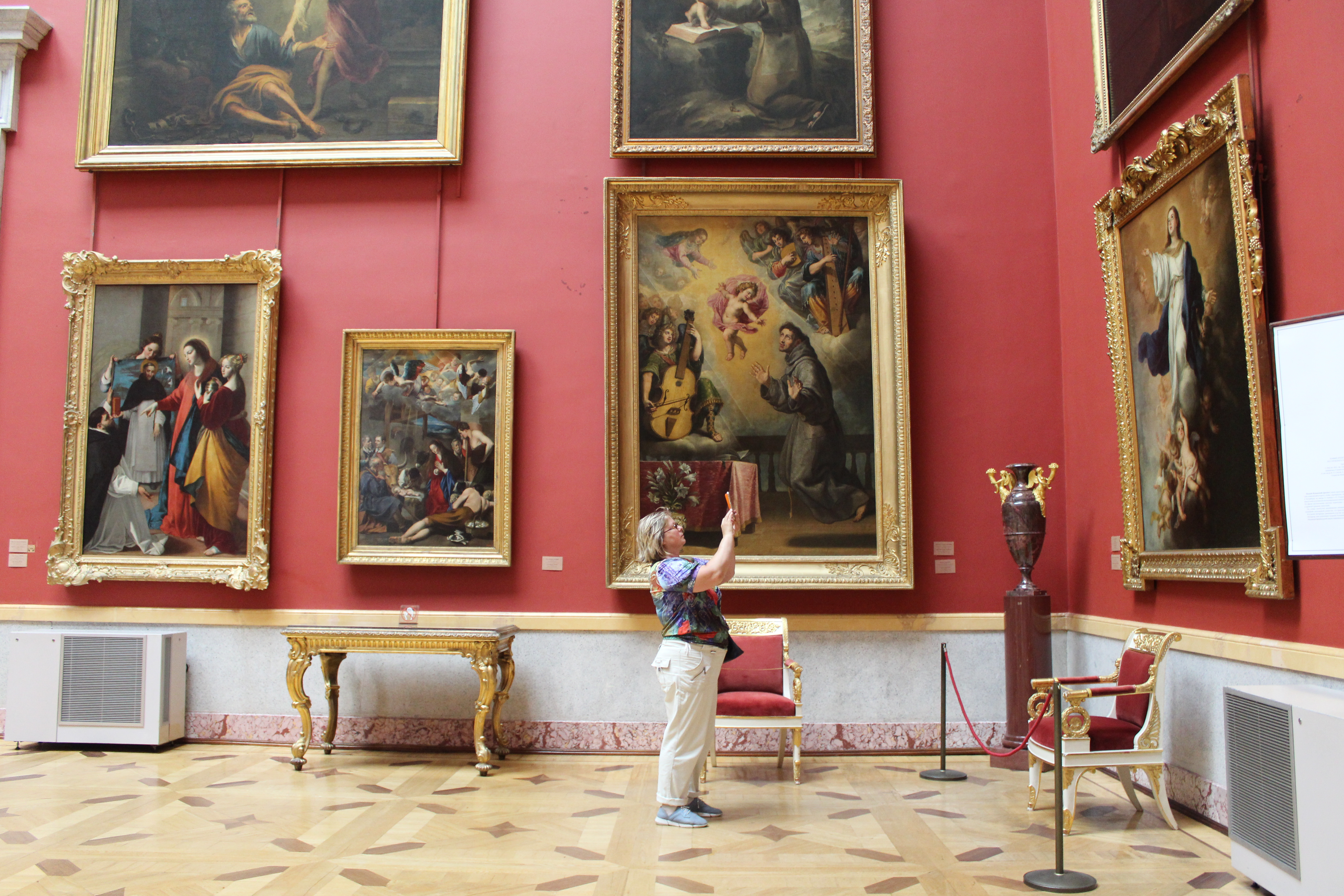 Peter the Great’s daughter Elizabeth was a wild partier and totally spoiled. She went through money like it was water. By the time she was done glam-ifying the Winter Palace there was only enough money left in the imperial coffers to buy an ox. Mind you these are the coffers filled by millions of serfs for centuries. And I thought I had a shopping problem.
Peter the Great’s daughter Elizabeth was a wild partier and totally spoiled. She went through money like it was water. By the time she was done glam-ifying the Winter Palace there was only enough money left in the imperial coffers to buy an ox. Mind you these are the coffers filled by millions of serfs for centuries. And I thought I had a shopping problem.
For more palace gossip which, let’s be real, is half the fun of going to Russia, head out to Tsarskoe Selo (Tsar’s Village) an hour outside of the city. This is where the Tsars went for summer vacation. I asked a guide if the Tsar owned all the palaces when he or she was reigning and he laughed and said “You’re mistaken. The Tsar owned everything, all of Russia.” Apparently at one point Nicholas II was asked to write his job title and he wrote “Owner of all the land.” He was the one that got executed.
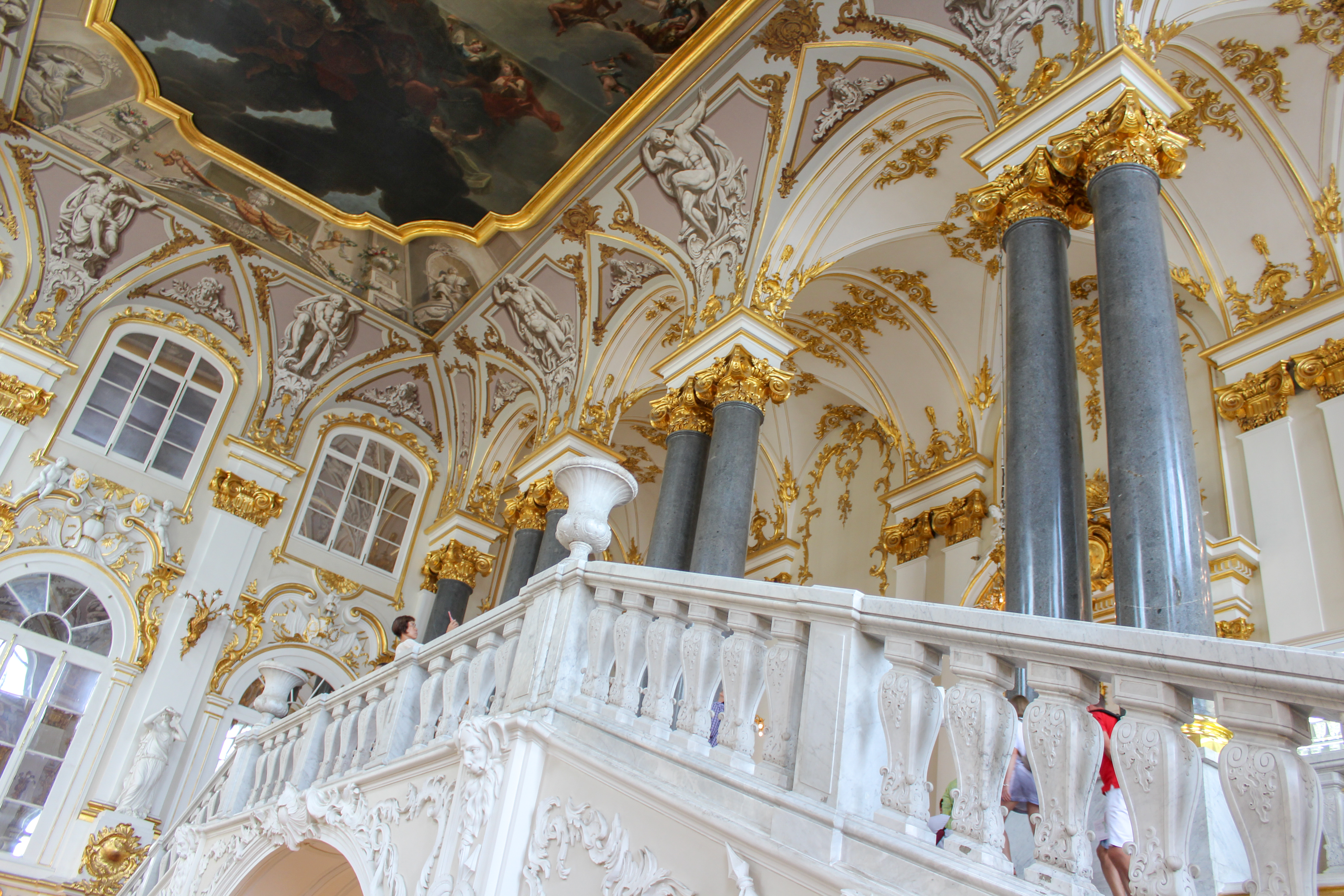
 In Russia I saw more gold than I’ve ever seen in my life. These palaces put Versailles to shame. Which was kind of the point. One of the reasons Russia has historically been wealthy and powerful is because it’s a massive country with virtually unlimited natural resources. So they could mine all these precious metals and gems at will. Because, apparently, they all belonged to the Tsar anyway.
In Russia I saw more gold than I’ve ever seen in my life. These palaces put Versailles to shame. Which was kind of the point. One of the reasons Russia has historically been wealthy and powerful is because it’s a massive country with virtually unlimited natural resources. So they could mine all these precious metals and gems at will. Because, apparently, they all belonged to the Tsar anyway.
For glamour check out Peterhof, which has gardens extending all the way to the gulf of Finland, and Catherine Palace, also known as the Summer Palace, which received the Elizabeth treatment. There’s a whole room just made of amber. If you’re dark and creepy like me check out Alexander Palace where the last Tsar (Nicholas II) and his family lived. When the revolution happened they were held captive there for some time before being shipped off to Siberia for execution. Although we weren’t able to stop there a guide said the bullet holes are still in the walls like the Bolsheviks invaded yesterday.
 After museums and palaces head to the churches. There were two in Saint Petersburg that I really loved. My favorite was Church of the Savior on Spilled Blood, named that because Alexander II was fatally wounded on that spot by revolutionaries and when he died they built this church after him. It was actually never used as a church because revolution erupted shortly after it was built and Stalin banned religion. It was used as a morgue and a farmer’s market. Hopefully not at the same time. Artistically this church blew me away. The interior is entirely mosaic in a very Russian style of bright iconography. Because it’s tiles and not paint it’s still incredibly vibrant.
After museums and palaces head to the churches. There were two in Saint Petersburg that I really loved. My favorite was Church of the Savior on Spilled Blood, named that because Alexander II was fatally wounded on that spot by revolutionaries and when he died they built this church after him. It was actually never used as a church because revolution erupted shortly after it was built and Stalin banned religion. It was used as a morgue and a farmer’s market. Hopefully not at the same time. Artistically this church blew me away. The interior is entirely mosaic in a very Russian style of bright iconography. Because it’s tiles and not paint it’s still incredibly vibrant.
My second favorite was the Kazan Cathedral, the mother church of Saint Petersburg. In Russia they practice Eastern Orthodox which is a branch of Christianity stemming from the Greek Orthodox church. We saw a service happening in the Kazan Cathedral which was a really cool experience. Having been raised Catholic it was interesting to see the differences. There are no pews in Eastern Orthodox churches, you stand or kneel for what can sometimes be a four hour service. The point is to suffer as Jesus suffered. Women must cover their heads (this is a good thing to note, some tourists don’t but it’s good to have a scarf on hand to be respectful).
 If you’re a literature nerd like me, Saint Petersburg is Dostoevsky paradise. He lived here and most of his works are set in the city. I went on a little self guided Crime and Punishment walking tour and basically cried the whole time. The building above is where Dostoevsky imagined Raskolnikov’s apartment to be (at the very top). The author had an apartment nearby and would walk the neighborhood imagining his characters’ lives. From Raskolnikov’s house I walked the path he takes to kill Alyona Ivanovna. I didn’t have time for a formal guided tour but I super recommend doing one if you can, this walk alone had me torn up. It’s also a great way to get out of downtown and see other areas of the city.
If you’re a literature nerd like me, Saint Petersburg is Dostoevsky paradise. He lived here and most of his works are set in the city. I went on a little self guided Crime and Punishment walking tour and basically cried the whole time. The building above is where Dostoevsky imagined Raskolnikov’s apartment to be (at the very top). The author had an apartment nearby and would walk the neighborhood imagining his characters’ lives. From Raskolnikov’s house I walked the path he takes to kill Alyona Ivanovna. I didn’t have time for a formal guided tour but I super recommend doing one if you can, this walk alone had me torn up. It’s also a great way to get out of downtown and see other areas of the city.
 We stopped by a bunch of other places as well including the Faberge Museum, the Repin Academy, and the General Staff Building at the Hermitage which has more modern stuff. The Pushkin Museum also provides some interesting insights into Russia’s most beloved author. Seriously, I surveyed many different locals and at least half still say Pushkin is their favorite author. Over 200 years later. Now that’s longevity.
We stopped by a bunch of other places as well including the Faberge Museum, the Repin Academy, and the General Staff Building at the Hermitage which has more modern stuff. The Pushkin Museum also provides some interesting insights into Russia’s most beloved author. Seriously, I surveyed many different locals and at least half still say Pushkin is their favorite author. Over 200 years later. Now that’s longevity.
Where to Eat
If anyone tries to tell you there’s no food scene in Russia or that Russians only eat American food, they’re lying. Like any major city there are cuisine’s available from all over the world but Russian food is still very prevalent. Traditionally lunch, or the midday meal, is the largest of the day. So Russians, wealthy ones anyway, would have four courses, soup, salad, a main dish, and then dessert and coffee or tea. Sometimes this is still the case although in modern working culture it’s often not an option.
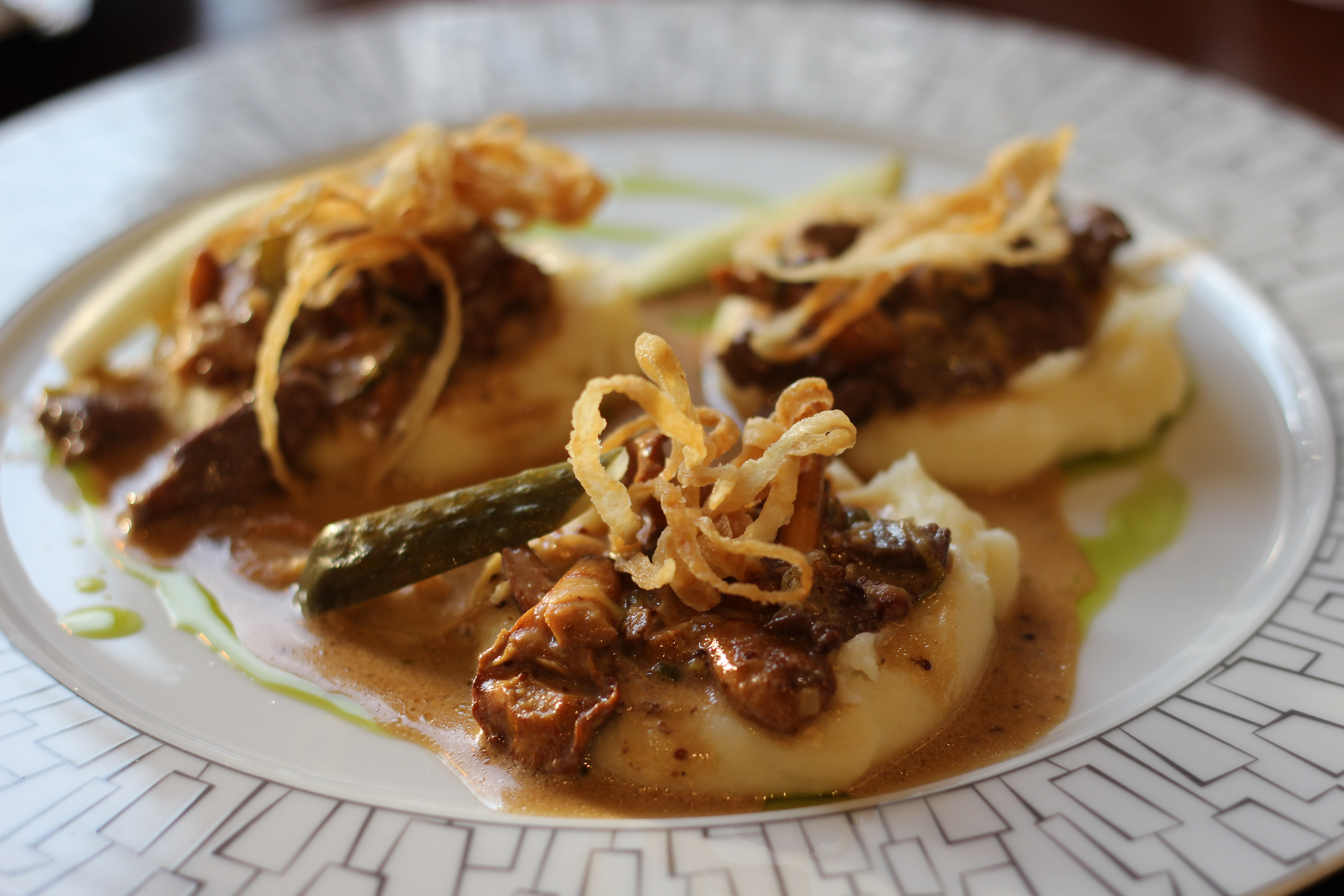 Above is a beef stroganoff I had at the Pushka Inn right by Pushkin’s house. Turns out beef stroganoff was invented by the cook to Count Stroganoff who had to come up with something soft for him to eat when he lost all his teeth. The Stroganoffs were very wealthy and did many other influential things and would be horrified to know this is their legacy.
Above is a beef stroganoff I had at the Pushka Inn right by Pushkin’s house. Turns out beef stroganoff was invented by the cook to Count Stroganoff who had to come up with something soft for him to eat when he lost all his teeth. The Stroganoffs were very wealthy and did many other influential things and would be horrified to know this is their legacy.
Pushka Inn served really delicious gourmet Russian food but at a super reasonable price. It’s also a cozy interior with a nice view of the canal across the street. Things you’ll see a lot of: cabbage and beets, the primary Russian vegetables. It was mushroom season while I was there and let me tell you those were some of the best mushrooms I’ve ever had. A phenomenon that I encountered with the food was receiving a plate of white and brown foods and thinking ‘oh I’ll just have a little’ cause it looked pretty average, and then eating the whole thing because it was delicious. Most of it’s comfort food with lots of cream and carb bases.
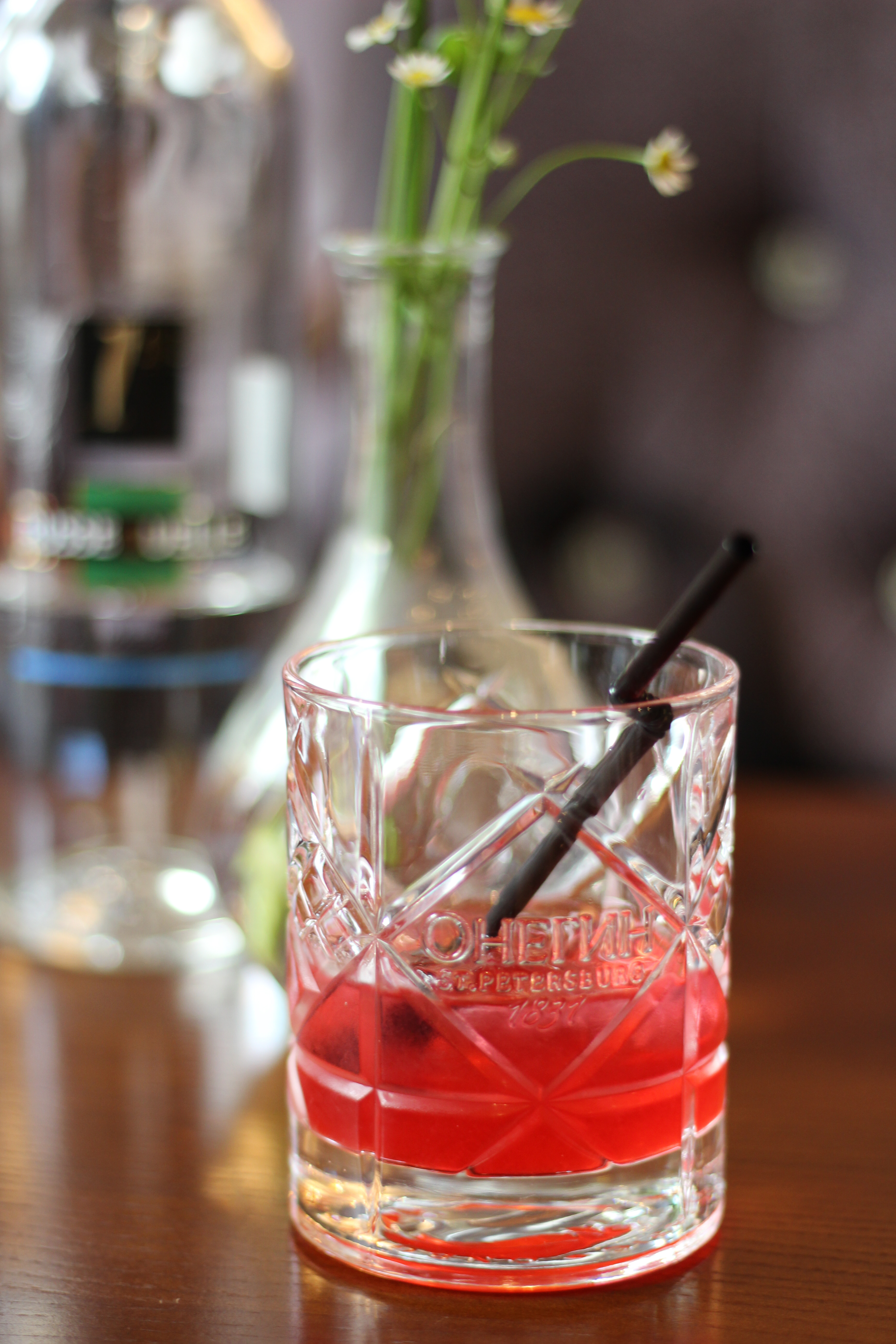 Let’s talk about vodka. According to the locals I met, the vodka tradition is not about getting drunk alone in a bar, despite what Dostoevsky leads us to believe. It’s about sitting with family or friends and having good food, good conversation, and vodka. One woman described it to me as, “the tradition of sitting.” Like wine in France, it’s a cultural bonding tool. I drank my vodka this way while I was there, with good friends and good conversation, though I took it deluded in a Cosmopolitan cause I’m not a true straight shooting Russian.
Let’s talk about vodka. According to the locals I met, the vodka tradition is not about getting drunk alone in a bar, despite what Dostoevsky leads us to believe. It’s about sitting with family or friends and having good food, good conversation, and vodka. One woman described it to me as, “the tradition of sitting.” Like wine in France, it’s a cultural bonding tool. I drank my vodka this way while I was there, with good friends and good conversation, though I took it deluded in a Cosmopolitan cause I’m not a true straight shooting Russian.
 This isn’t a homegrown, local recommendation but we ate one night at the restaurant on top of the Sofitel hotel and it had a beautiful view of the city and of Saint Isaac’s Cathedral (pictured above). True it’s a chain hotel but it was amazing ambiance. I recommend at least having a cocktail there, though the mushroom risotto I had was to die for.
This isn’t a homegrown, local recommendation but we ate one night at the restaurant on top of the Sofitel hotel and it had a beautiful view of the city and of Saint Isaac’s Cathedral (pictured above). True it’s a chain hotel but it was amazing ambiance. I recommend at least having a cocktail there, though the mushroom risotto I had was to die for.
Of all the cool museums and restaurants we went to, my favorite part of Saint Petersburg was just walking the streets. Dostoevsky is very descriptive in his writings, often citing bridges, gardens, and boulevards like Nevsky Prospekt. It’s easy to find the spots he was writing about and imagine him walking through them. While I was walking to Raskolnikov’s house I heard the bells of the Kazan Cathedral ringing and wondered if Raskolnikov was agitated by the noise as he paced the streets.
It was an unreal experience to be in the places I’ve lived through words for so long. Whenever I come home from a trip I’m always a little bit excited to be going back to Boston. Russia was the first trip, possibly ever, when I didn’t want to come home.